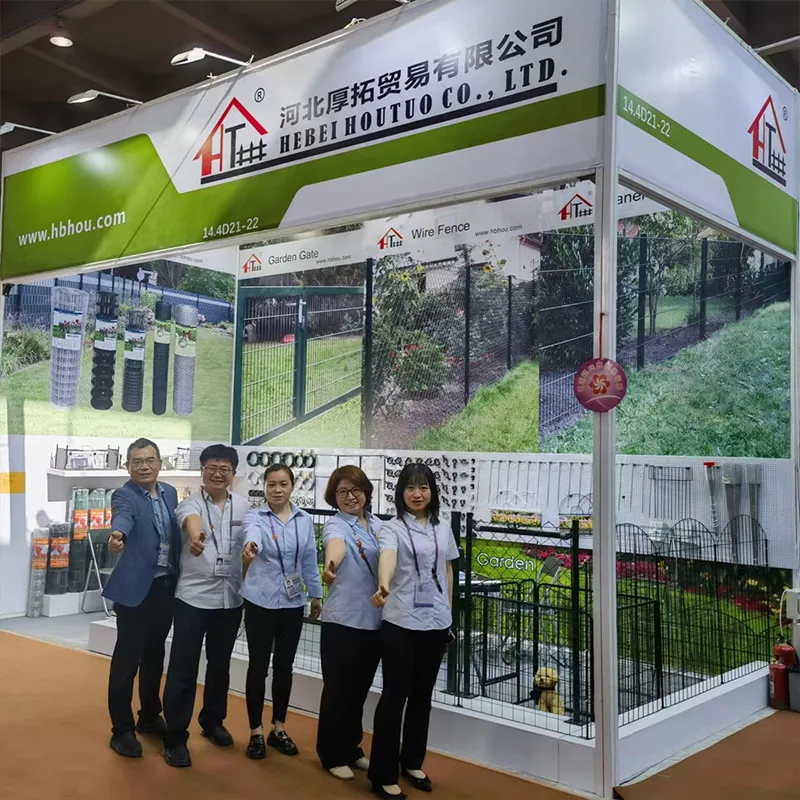Chain Link Fence Posts and Rails A Comprehensive Guide
Chain link fences are one of the most popular fencing options available today. They are versatile, durable, and can be used for various applications, ranging from residential to commercial and industrial uses. Central to the structure of a chain link fence are its posts and rails, which play a pivotal role in ensuring the stability and effectiveness of the fence. In this article, we will discuss the essential components of chain link fence posts and rails, their types, installation tips, and advantages.
Understanding Chain Link Fence Components
A chain link fence primarily consists of three main components the posts, the rails, and the chain link fabric. The posts are vertical supports, while the rails are horizontal components that run between these posts. Together, they create a sturdy framework that holds the chain link fabric in place.
1. Chain Link Fence Posts
Posts are the backbone of any chain link fence, providing it with strength and stability. They come in various materials, but the most common types are galvanized steel and aluminum. Galvanized steel posts are particularly popular due to their durability and resistance to rust and corrosion.
There are primarily two types of posts used in chain link fences
- Terminal Posts These are located at the ends of the fence runs and are also used at corners and gates. Terminal posts are thicker and provide additional strength to support the tension of the fabric.
- Line Posts These posts are installed between terminal posts and serve as additional support for the chain link fabric. They are typically spaced 10 to 12 feet apart, depending on the height and type of the fence.
2. Chain Link Fence Rails
Rails are horizontal bars attached to the posts to provide additional support for the chain link fabric. They help to maintain the shape of the fence and prevent sagging over time. The most common types of rails used are
- Top Rails These rails run along the top edge of the fence and provide structural support. They add stability and keep the chain link material taut.
- Bottom Rails While not always necessary, bottom rails can be added for further support and to prevent animals from burrowing under the fence.
Installation Tips
Installing a chain link fence may seem daunting at first, but with the right tools and approach, it can be a manageable DIY project. Here are some essential steps
chain link fence posts and rails

1. Planning and Measuring Before installation, plan the layout and measure the area where the fence will be installed. Mark the locations of the posts with stakes.
2. Digging Postholes Use a post hole digger or auger to create holes for the posts. Make sure they are deep enough to provide stability (generally 1/3 of the post height should be underground).
3. Setting the Posts Place the posts into the holes and ensure they are level. Fill the holes with concrete or gravel for stability, allowing it to cure as recommended.
4. Attaching Rails Once the posts are set, attach the top and bottom rails to the posts using brackets or connectors.
5. Installing the Chain Link Fabric Finally, roll out the chain link fabric and attach it to the posts and rails using tension bands and tie wires.
Advantages of Chain Link Fences
Chain link fences offer numerous advantages that make them an excellent choice for many property owners
- Cost-Effective Chain link fences are generally less expensive than wooden or vinyl alternatives, making them a budget-friendly option.
- Durability Made from galvanized steel, chain link fences are resistant to rust and corrosion, leading to long-lasting performance.
- Low Maintenance Chain link fences require minimal upkeep. Occasional cleaning and inspection are all that’s needed to maintain their appearance and functionality.
- Versatility Chain link fences come in various heights and can be customized with different coatings, colors, and modifications to suit specific needs.
- Security and Visibility They provide a secure barrier while maintaining visibility, making them ideal for properties where surveillance is essential.
Conclusion
Chain link fence posts and rails are critical components that determine the durability and functionality of a chain link fence. By understanding their types, installation techniques, and advantages, you can make informed decisions for your fencing needs. Whether for security, boundary demarcation, or aesthetic purposes, a well-installed chain link fence can serve you effectively for many years.
















